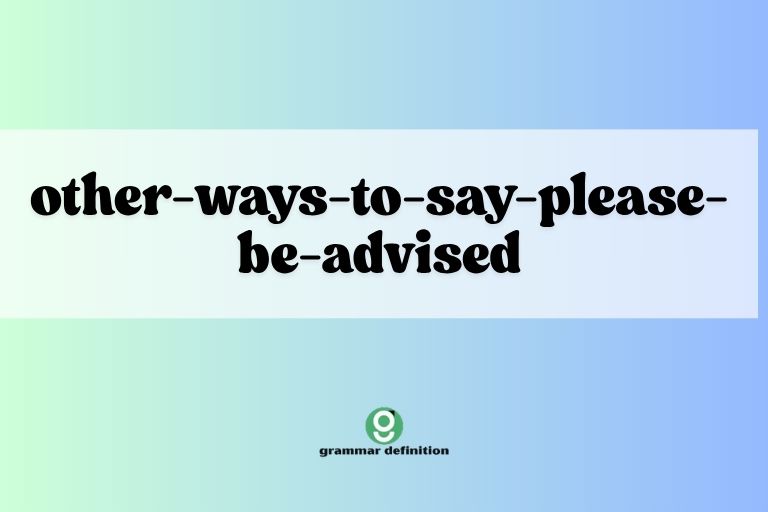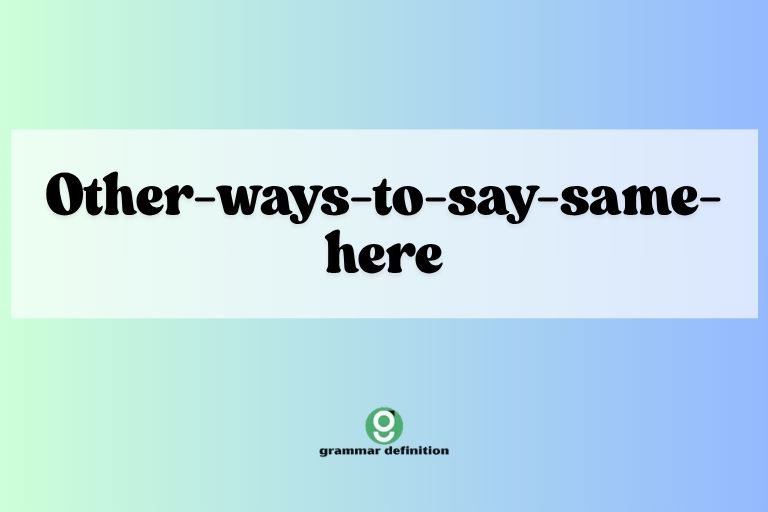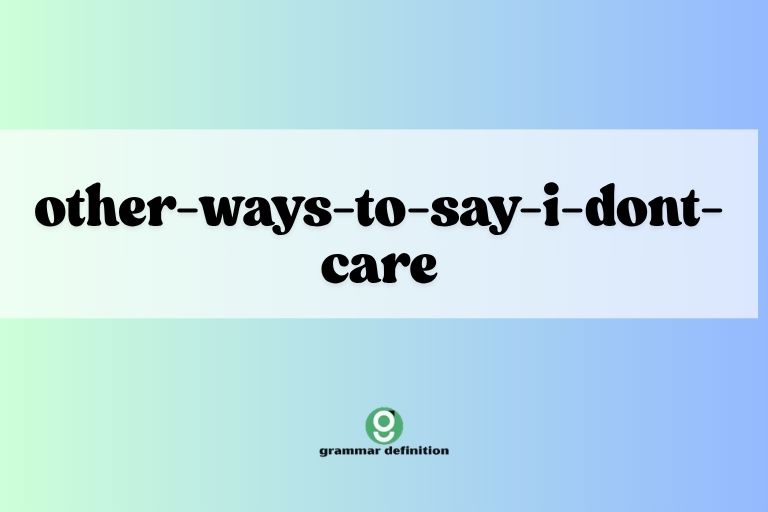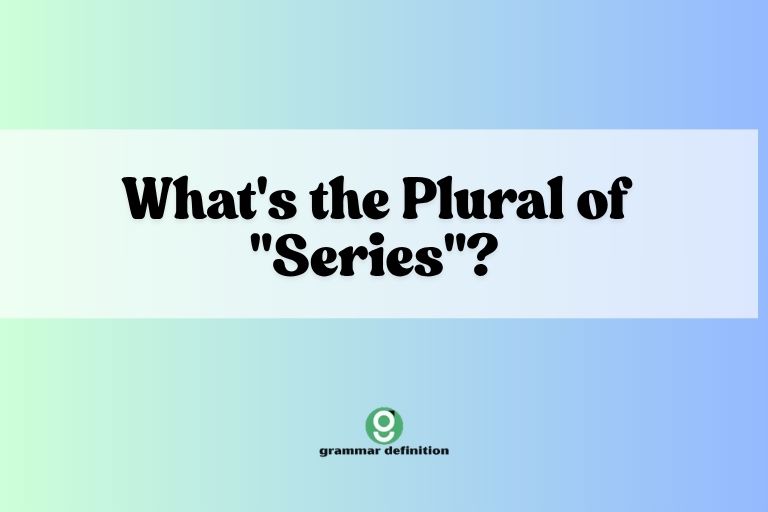“Cut” and Its Tenses: Mastering a Tricky Verb
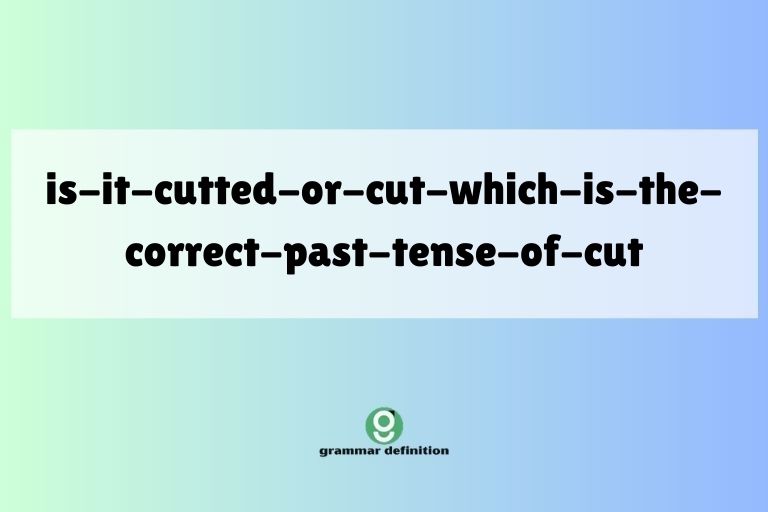
Understanding the correct past tense of irregular verbs like “cut” is crucial for clear and accurate communication in English. Many learners mistakenly assume that all verbs follow the regular pattern of adding “-ed” to form the past tense and past participle.
This article provides a comprehensive guide to the verb “cut,” its various forms, usage rules, common errors, and practice exercises. Whether you are a beginner or an advanced learner, this guide will help you master the proper use of “cut” in different contexts.
This article will benefit English language learners of all levels, from beginners grappling with basic verb tenses to advanced speakers aiming for grammatical precision. By understanding the nuances of irregular verbs like “cut,” learners can significantly improve their writing and speaking skills.
Table of Contents
- Introduction
- Definition of “Cut”
- Structural Breakdown of “Cut”
- Types and Categories of “Cut” Usage
- Examples of “Cut” in Different Tenses
- Usage Rules for “Cut”
- Common Mistakes with “Cut”
- Practice Exercises
- Advanced Topics
- Frequently Asked Questions
- Conclusion
Definition of “Cut”
The verb “cut” is a versatile word with several meanings, but its core definition involves using a sharp object to divide or separate something. It is classified as an irregular verb because its past tense and past participle forms do not follow the standard “-ed” ending. Understanding its different functions and contexts is essential for using it correctly.
Classification and Function
“Cut” can function as both a transitive verb, requiring a direct object (e.g., “I cut the paper”), and an intransitive verb, not requiring a direct object (e.g., “The knife cuts easily”). It can also be used as a noun (e.g., “a cut on my finger”). In this article, we primarily focus on its verb form and its various tenses.
Contexts of Use
The verb “cut” appears in a wide range of contexts, from everyday activities to more specialized fields. These contexts include:
- Cooking: “Cut the vegetables into small pieces.”
- Gardening: “Cut the grass regularly.”
- Construction: “Cut the wood to the required length.”
- Fashion: “The tailor cut the fabric precisely.”
- Figurative language: “His words cut deep.”
Structural Breakdown of “Cut”
The verb “cut” is characterized by its unchanging form across the present, past, and past participle tenses. This makes it a relatively simple irregular verb to learn, but it also means that context is crucial for understanding which tense is being used.
The basic forms are:
- Base Form (Present Tense): cut
- Past Tense: cut
- Past Participle: cut
- Present Participle: cutting
The unchanging form of “cut” in the past tense and past participle can sometimes lead to confusion, but understanding the surrounding words and the overall sentence structure will usually clarify the intended meaning. For example, auxiliary verbs like “have” or “had” before “cut” indicate the past participle form, used in perfect tenses.
Types and Categories of “Cut” Usage
The verb “cut” can be categorized based on its transitivity and the specific meaning it conveys in different contexts. Here are some common categories:
Transitive vs. Intransitive
- Transitive: The verb takes a direct object. Example: “She cut the cake.” Here, “cake” is the direct object.
- Intransitive: The verb does not take a direct object. Example: “The knife cuts well.” Here, there is no direct object; the verb describes the knife’s ability.
Specific Meanings
- To divide with a sharp object: “He cut the rope with a knife.”
- To reduce or decrease: “The company cut its expenses.”
- To remove something: “Please cut out the article from the newspaper.”
- To intersect or cross: “The road cuts through the forest.”
Phrasal Verbs with “Cut”
“Cut” also appears in several phrasal verbs, which combine “cut” with a preposition or adverb to create a new meaning. Some common examples include:
- Cut off: To interrupt or disconnect. Example: “The phone line was cut off.”
- Cut out: To remove something. Example: “Cut out the picture from the magazine.”
- Cut back: To reduce. Example: “We need to cut back on spending.”
- Cut up: To cut into pieces. Example: “She cut up the vegetables.”
Examples of “Cut” in Different Tenses
This section provides extensive examples of the verb “cut” used in different tenses and contexts. Understanding these examples will help you grasp the nuances of its usage.
Present Tense Examples
In the present tense, “cut” describes actions happening now or habitual actions. Here are some examples:
| Sentence | Explanation |
|---|---|
| I cut the bread every morning. | Describes a habitual action. |
| She cuts her hair short. | Describes a recurring style. |
| The butcher cuts the meat. | Describes his job. |
| He cuts the grass on weekends. | Describes a regular chore. |
| The knife cuts through butter easily. | Describes a characteristic of the knife. |
| She cuts expenses wherever possible. | Describes a cost-saving strategy. |
| The tailor cuts fabric with precision. | Describes a professional skill. |
| The surgeon cuts with steady hands. | Describes a necessary surgical skill. |
| The artist cuts paper to create designs. | Describes a creative process. |
| The gardener cuts roses from the bush. | Describes a gardening practice. |
| The movie director cuts scenes during editing. | Describes a film editing task. |
| The seamstress cuts patterns from paper. | Describes a sewing preparation step. |
| The chef cuts vegetables for the soup. | Describes a cooking preparation step. |
| The editor cuts unnecessary words from the article. | Describes an editing process. |
| The teacher cuts out shapes for the lesson. | Describes a classroom activity. |
| The jeweler cuts gemstones with care. | Describes a jewelry-making skill. |
| The sculptor cuts stone to create statues. | Describes a sculpting technique. |
| The road cuts through the mountains. | Describes the road’s path. |
| The river cuts deep into the canyon. | Describes the river’s erosion. |
| The wind cuts sharply through the trees. | Describes the wind’s effect. |
| The company cuts prices to attract customers. | Describes a business strategy. |
| The government cuts funding for education. | Describes a policy decision. |
| The doctor cuts off circulation to stop the bleeding. | Describes a medical procedure. |
| The mechanic cuts wires to repair the engine. | Describes an automotive repair task. |
| The program cuts out the commercials during recording. | Describes a software function. |
| The machine cuts metal sheets into precise shapes. | Describes an industrial process. |
| The athlete cuts corners during the race. | Describes a racing technique. |
| The politician cuts deals behind closed doors. | Describes a political negotiation tactic. |
| The detective cuts through the lies to find the truth. | Describes an investigative approach. |
Past Tense Examples
The past tense of “cut” is also “cut.” Context is essential to determine when the action occurred in the past. Here are some illustrative sentences:
| Sentence | Explanation |
|---|---|
| Yesterday, I cut my finger. | A specific past event. |
| She cut the cake for the party. | Describes a completed action. |
| The barber cut his hair last week. | Describes a past event. |
| He cut the rope to free the boat. | Describes a past action. |
| The chef cut the vegetables before the guests arrived. | Action completed before another event. |
| She cut the fabric according to the pattern. | Describes a past task. |
| The gardener cut the roses in the morning. | Describes a specific past event. |
| The company cut its losses last quarter. | Describes a business action. |
| The editor cut the unnecessary scenes from the film. | Describes a film editing task. |
| The teacher cut out shapes for the children. | Describes a classroom activity. |
| The surgeon cut the stitches carefully. | Describes a medical procedure. |
| The tailor cut the suit to perfection. | Describes a tailoring skill. |
| The wind cut through the trees during the storm. | Describes a weather event. |
| The river cut a deeper path over time. | Describes erosion. |
| The athlete cut his training short due to injury. | Describes an unexpected event. |
| The politician cut a deal to gain support. | Describes a political negotiation. |
| The detective cut through the confusion to solve the case. | Describes an investigative process. |
| The machine cut the metal with precision. | Describes an industrial process. |
| The program cut out the extra noise. | Describes a software function. |
| The government cut taxes to stimulate the economy. | Describes a policy decision. |
| The doctor cut off the infection. | Describes a medical intervention. |
| The mechanic cut the old wires. | Describes a repair task. |
| The artist cut the canvas to start anew. | Describes an artistic decision. |
| The jeweler cut the diamond skillfully. | Describes a professional skill. |
| The sculptor cut the marble to reveal the statue. | Describes a sculpting technique. |
| The road cut through the valley. | Describes the road’s location. |
| He cut his hair himself last night. | Describes a personal action. |
| She cut ties with her former friends. | Describes a relationship change. |
Past Participle Examples
The past participle of “cut” is also “cut.” It is used with auxiliary verbs like “have,” “has,” or “had” to form perfect tenses. Here are some examples:
| Sentence | Explanation |
|---|---|
| I have cut the grass. | Present perfect tense: action completed recently. |
| She has cut her hair short. | Present perfect tense: recent change. |
| He had cut the wood before I arrived. | Past perfect tense: action completed before another past action. |
| The cake has been cut. | Present perfect passive voice. |
| The fabric had been cut before the sewing began. | Past perfect passive voice. |
| The roses have been cut for the arrangement. | Present perfect passive voice. |
| The company has cut its expenses significantly. | Present perfect tense: recent reduction. |
| The film had been cut to fit the time slot. | Past perfect passive voice. |
| The shapes have been cut for the art project. | Present perfect passive voice. |
| The stitches have been cut by the doctor. | Present perfect passive voice. |
| The suit has been cut by a skilled tailor. | Present perfect passive voice. |
| The trees have been cut by the storm. | Present perfect passive voice. |
| The path had been cut deeper over the years. | Past perfect passive voice. |
| His training has been cut short due to injury. | Present perfect passive voice. |
| A deal has been cut between the parties. | Present perfect passive voice. |
| The confusion has been cut through by the detective. | Present perfect passive voice. |
| The metal has been cut with precision. | Present perfect passive voice. |
| The noise has been cut out by the program. | Present perfect passive voice. |
| Taxes have been cut to stimulate the economy. | Present perfect passive voice. |
| The infection had been cut off before it spread. | Past perfect passive voice. |
| The wires have been cut for the repair. | Present perfect passive voice. |
| The canvas has been cut to start a new painting. | Present perfect passive voice. |
| The diamond has been cut by a master jeweler. | Present perfect passive voice. |
| The marble had been cut to create the statue. | Past perfect passive voice. |
| The road has been cut through the mountains. | Present perfect passive voice. |
| He has cut his own hair recently. | Present perfect tense: recent action. |
| She has cut ties with her old company. | Present perfect tense: recent change. |
Present Participle Examples
The present participle of “cut” is “cutting.” It is used in continuous tenses and as a gerund or participle. Here are some examples:
| Sentence | Explanation |
|---|---|
| I am cutting the bread right now. | Present continuous tense: action happening now. |
| She is cutting her hair at the salon. | Present continuous tense: action in progress. |
| He was cutting the wood when the saw broke. | Past continuous tense: action in progress in the past. |
| Cutting vegetables is a part of cooking. | Gerund: verb acting as a noun. |
| The cutting edge technology is revolutionary. | Participle: verb acting as an adjective. |
| She is cutting expenses to save money. | Present continuous: ongoing cost-saving effort. |
| He was cutting the fabric when the phone rang. | Past continuous: interrupted action. |
| They are cutting roses for the wedding. | Present continuous: preparing for an event. |
| The editor is cutting scenes from the movie. | Present continuous: ongoing editing process. |
| The teacher is cutting out shapes for the class. | Present continuous: classroom activity. |
| The doctor is cutting the stitches after surgery. | Present continuous: post-operative care. |
| The tailor is cutting the suit with precision. | Present continuous: professional tailoring. |
| The wind was cutting through the trees fiercely. | Past continuous: intense weather event. |
| The river is cutting a deeper path over time. | Present continuous: ongoing erosion process. |
| He is cutting his training short due to injury. | Present continuous: adapting to circumstances. |
| The politician is cutting a deal behind closed doors. | Present continuous: ongoing negotiation. |
| The detective is cutting through the lies to find the truth. | Present continuous: investigative process. |
| The machine is cutting metal with a laser. | Present continuous: industrial process. |
| The program is cutting out the commercials. | Present continuous: software function. |
| The government is cutting taxes to boost the economy. | Present continuous: policy implementation. |
| The doctor is cutting off the infection. | Present continuous: medical intervention. |
| The mechanic is cutting the wires to fix it. | Present continuous: repair task. |
| The artist is cutting the canvas to create a new design. | Present continuous: artistic creation. |
| The jeweler is cutting the gemstones meticulously. | Present continuous: professional craftsmanship. |
| The sculptor is cutting the stone to form the statue. | Present continuous: sculpting technique. |
| The road is cutting through the wilderness. | Present continuous: geographical feature. |
| He is cutting his own hair to save money. | Present continuous: personal grooming. |
| She is cutting ties with toxic people. | Present continuous: relationship management. |
Usage Rules for “Cut”
The primary rule is to remember that “cut” remains the same in the present, past, and past participle forms. However, there are some nuances to consider:
Context is Key
Since the form doesn’t change, rely on context, auxiliary verbs, and adverbs of time to determine the tense. For example:
- Present: “I cut the paper now.”
- Past: “I cut the paper yesterday.”
- Past Participle: “I have cut the paper.”
Use of Auxiliary Verbs
Auxiliary verbs like “have,” “has,” and “had” are essential for forming perfect tenses with “cut.”
- Present Perfect: “She has cut the ribbon.”
- Past Perfect: “He had cut the grass before it rained.”
Passive Voice
In the passive voice, use “be” verbs (is, was, were, are, been, being) with the past participle “cut.”
- Present Passive: “The cake is cut.”
- Past Passive: “The rope was cut.”
- Present Perfect Passive: “The tree has been cut.”
Common Mistakes with “Cut”
The most common mistake is using “cutted” as the past tense or past participle. This is incorrect.
The correct form is always “cut.”
| Incorrect | Correct | Explanation |
|---|---|---|
| I cutted the bread. | I cut the bread. | “Cut” is already the correct past tense form. |
| She has cutted her hair. | She has cut her hair. | “Cut” is the correct past participle. |
| He had cutted the rope. | He had cut the rope. | “Cut” is the correct past participle. |
Practice Exercises
Test your understanding with these exercises. Fill in the blank with the correct form of “cut.”
Exercise 1: Basic Tenses
| Question | Answer |
|---|---|
| Yesterday, I _____ my finger. | cut |
| She _____ her hair every month. | cuts |
| He has _____ the wood. | cut |
| They are _____ the cake now. | cutting |
| The barber _____ my hair last week. | cut |
| I have just _____ the grass. | cut |
| She _____ the fabric carefully. | cuts/cut |
| He had _____ the rope before the storm. | cut |
| We are _____ expenses this year. | cutting |
| The chef _____ the vegetables into small pieces. | cuts |
Exercise 2: Sentence Completion
| Question | Answer |
|---|---|
| Before I arrived, he had already _____ the cake. | cut |
| She is _____ the roses for the bouquet. | cutting |
| The tailor _____ the suit to fit perfectly. | cut |
| The company _____ its losses last quarter. | cut |
| The editor has _____ several scenes from the film. | cut |
| The teacher _____ out shapes for the students. | cuts/cut |
| The surgeon _____ the stitches after the operation. | cut |
| The wind _____ through the trees during the storm. | cut |
| The river has _____ a deep canyon over time. | cut |
| He is _____ his training short due to injury. | cutting |
Exercise 3: Error Correction
| Question | Answer |
|---|---|
| I have cutted the paper. | I have cut the paper. |
| She cutted her finger yesterday. | She cut her finger yesterday. |
| He is cutting the grass now. (Correct) | He is cutting the grass now. |
| They had cutted the rope before we arrived. | They had cut the rope before we arrived. |
| The barber cutted my hair last week. | The barber cut my hair last week. |
| She has cutted the fabric. | She has cut the fabric. |
| He cutted the vegetables for the salad. | He cut the vegetables for the salad. |
| The company cutted its expenses. | The company cut its expenses. |
| The editor cutted the unnecessary scenes. | The editor cut the unnecessary scenes. |
| I just cutted my nails. | I just cut my nails. |
Advanced Topics
For advanced learners, understanding the nuances of “cut” in more complex sentence structures and idiomatic expressions is important.
Idiomatic Expressions
“Cut” appears in several idiomatic expressions, where the meaning is not literal. Understanding these expressions requires familiarity with their specific usage.
- Cut to the chase: To get to the point quickly.
- Cut corners: To do something poorly to save money or time.
- Cut a rug: To dance energetically.
- Cut someone some slack: To give someone a break or be lenient.
Figurative Language
“Cut” can also be used figuratively to describe emotional or psychological impact.
- “His words cut deep.” (Caused emotional pain)
- “The criticism cut her to the quick.” (Deeply affected her)
Frequently Asked Questions
- Is “cutted” ever correct?
No, “cutted” is never the correct form. The past tense and past participle of “cut” are always “cut.”
- How do I know which tense “cut” is in a sentence?
Context is crucial. Look for auxiliary verbs (have, has, had) or adverbs of time (yesterday, now, already) to determine the tense.
- What is the past participle of “cut”?
The past participle of “cut” is “cut.” It is used with auxiliary verbs to form perfect tenses (e.g., “I have cut”).
- Can “cut” be used as a noun?
Yes, “cut” can be a noun, referring to an injury or a style (e.g., “a cut on my arm,” “a stylish cut”).
- What are some common phrasal verbs with “cut”?
Common phrasal verbs include “cut off,” “cut out,” “cut back,” and “cut up,” each with its distinct meaning.
- How is “cut” used in the passive voice?
In the passive voice, “cut” is used with “be” verbs (is, was, were, are, been, being) (e.g., “The cake was cut”).
- What does “cut to the chase” mean?
“Cut to the chase” is an idiom that means to get to the point quickly, without unnecessary details.
- How do you use “cut” in continuous tenses?
In continuous tenses, the present participle “cutting” is used with auxiliary verbs like “am”, “is”, “are”, “was”, “were” (e.g., “I am cutting the bread,” “She was cutting the fabric”).
Conclusion
Mastering the use of “cut” involves primarily remembering its unchanging form across different tenses and focusing on contextual clues to determine the intended meaning. Avoid the common mistake of using “cutted.” By understanding the rules, studying examples, and practicing regularly, you can confidently and accurately use “cut” in your English communication.
Continue practicing with various exercises and real-life examples to solidify your understanding. Pay attention to how native speakers use “cut” in different contexts, and don’t hesitate to ask for feedback on your own usage.
With consistent effort, you’ll master this tricky verb and enhance your overall English proficiency.

